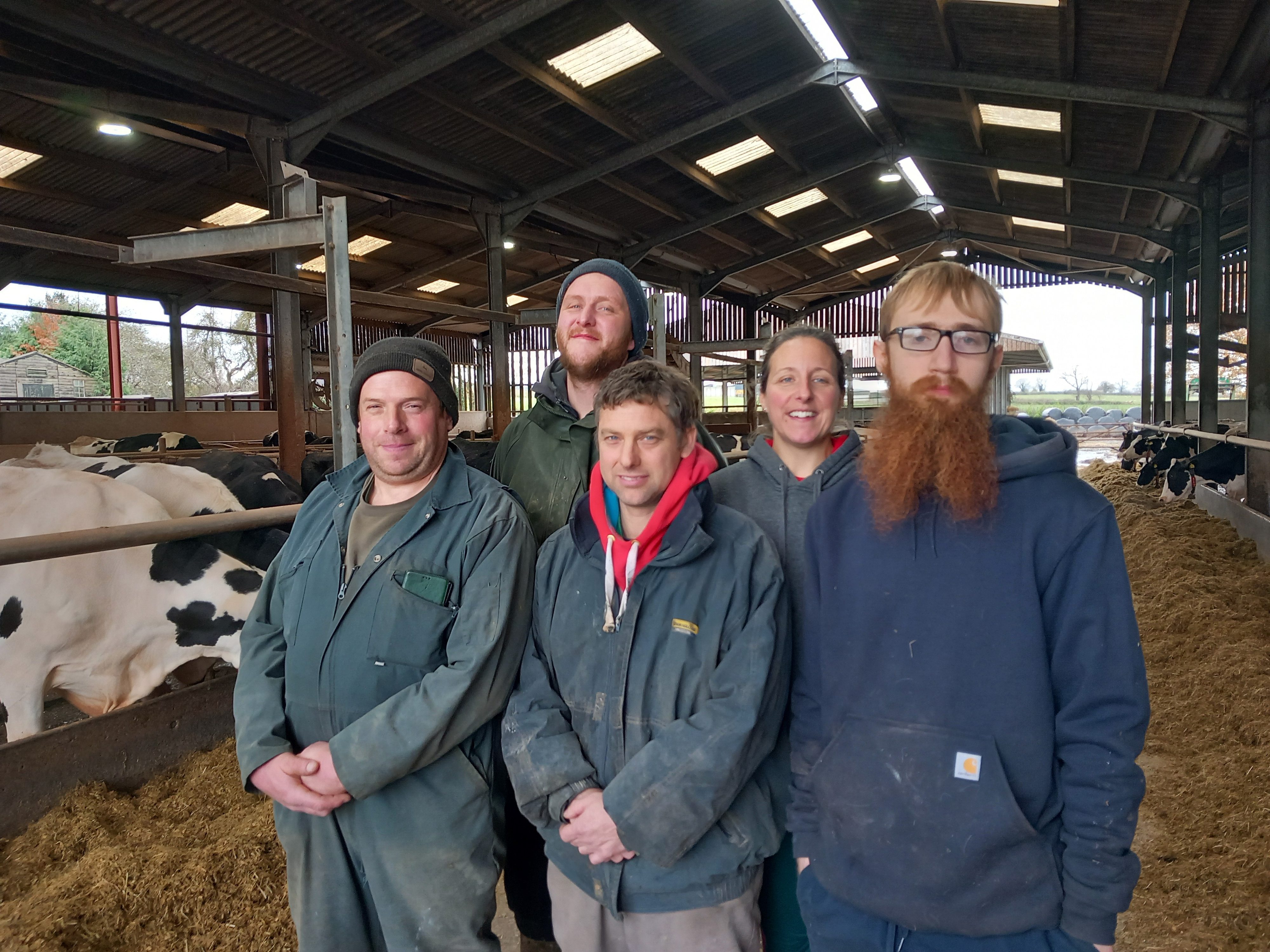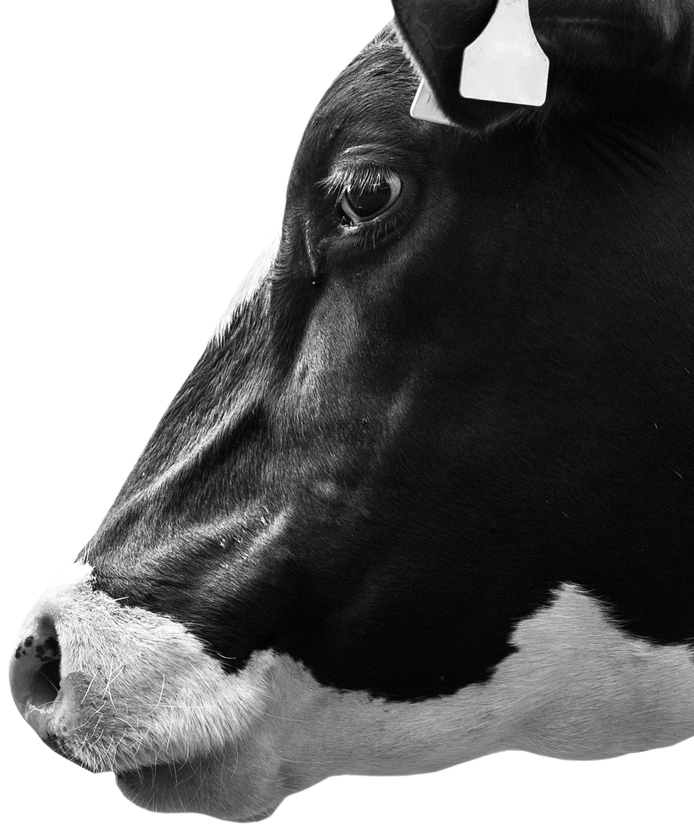Ruth and Stephen Ashley, Condover, Shropshire
Stephen and Ruth Ashley’s progressive approach to their dairy business and attention to detail have earned them and their team a finalist place. This family-owned business, now run by the second generation, has taken big strides to introduce new innovations during the past decade. The husband-and-wife team took on the 162-hectare dairy unit, based near Condover in Shropshire, in 2011 with Stephen’s parents, Pat and Peter, remaining in the business partnership.
A key development was the introduction of an automatic milking system. The first robot was installed in 2013 and a second was added in 2016. For the past eight years, their 120-cow Holstein herd has been milked through robots, with cow production and cell count data collected daily by the system.

Left to right Mark Price, Dave Beckett, Steve Ashley, Ruth Ashley and Alex Gwyther
Two full-time employees work with Ruth and Stephen, as well as two part-time staff for weekends and maintenance. They manage the milking herd, followers and dairy beef, which are finished on the unit, plus much of the silaging and cropping work.
“We put a lot of emphasis on maintaining a good work-life balance,” says Stephen. “We’ve completed some intensive building projects during the past few years, and we have a young family who we want to spend time with. So we need enough people on hand to avoid compromising herd performance.”
The all-year-round calving herd is fully housed. Cows are fed a partial mixed ration comprising grass silage, maize, hay, concentrate blend and minerals. Cows are fed according to yield with a 16% protein concentrate, at an average rate of 0.184kg per litre of milk, through the milking robots.
This ration and management system supports the high-yielding herd, which ranked third in NMR’s top 1% nationally for the year ending September 2023, with a combined fat and protein production of 1,002kg. Annual production is currently 14,941kg of milk per cow.
The breeding policy is based on producing high performance, long-lasting cows with balanced conformation. Teat length and placement, milking speed and mobility are key credentials for the robot milking system, where cows are expected to produce a lot of milk with high solids.
Sexed semen has been used on the best heifers and cows and the Ashleys are now genomically testing to improve the accuracy of selecting animals for replacements.
Those not bred to dairy are crossed with a beef bull, predominantly Angus and some Hereford, and finished on farm, making more than 300 head of cattle on the unit.
Health and fertility standards are high. Only 2% of calves fail to calve as heifers, and the herd’s mastitis rate is just four cases per 100 cows per year.
Ruth, who is RoMS (Register of Mobility scorers) accredited, carries out locomotion and body condition scoring every month. These are inputted onto the UNIFORM dairy management system and action lists are used to carry out remedial care.
A foot trimmer visits every two weeks, and each cow trimmed according to her yield, three or four times a year. Any mobility issues are identified through thermal imaging, which is done while cows are at the feed fence, and attended to before problems arise. Lameness incidence is less than 5%, and cows are managed to a body condition score of 3 at drying off.
Preventative measures
The typical approach for this herd is preventative care. In terms of udder health, cows are vaccinated against mastitis during the dry period and bedded on deep sand that is levelled three times a day and cleaned and topped up weekly.
Antibiotic use is low, and bacteriology testing determines any mastitis causing pathogens and determine the best treatment. Selective dry cow therapy is used, with less than 11% of cows needing an antibiotic at drying off.
The herd is screened routinely for Johne’s disease and there are now no red cows in the herd, and all animals are vaccinated for BVD and IBR.
The Ashleys have adopted a range of environmental schemes and are pursuing more efficient and sustainable practices to reduce their carbon footprint.
“Improving soil biology by creating compost on farm will reduce our fertiliser requirements,” says Stephen. “We’re currently using 57kg of nitrogen per hectare.
“And we’ll look to increase milk from forage by improving forage quality. Progress in these areas will help us to reduce our reliance on purchased inputs.”
Future plans include more investment in renewable energy, such as further roof-top solar installations, and genomic testing will support their drive to breed a more efficient and longer-lasting cow without compromising production.
“We aim to build a profit for future investment and create a strong business that offers opportunities for future generations,” adds Stephen.
Key facts:
• Livestock: 311 head - 125 cows, 100 followers, 86 beef cattle
• Milk yield: 14,601kg at 3.96% fat and 3.36% protein
• Milk from forage: 3,203kg
• Pregnancy rate: 28%
• Somatic cell count: 84 cells/ml
• Mastitis rate: 4 cases per 100 cows per year
• Calving interval: 369 days
• Age at first calving: 22.9 months
• Milk buyer: Müller (Co-op contract)
